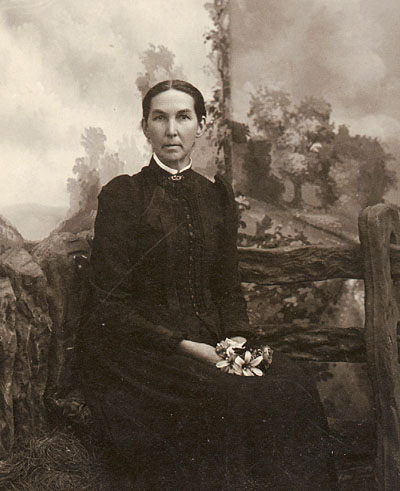Stewart, Agnes
From Lane Co Oregon
Locations · People · Equipment · Chronology · Index · Categories · Browse · Discussion · FAQ · Help · Things to do · Article requests
 |
|
| Agnes Stewart | |
|---|---|
| Personal Identity | |
| Occupation | Teacher |
| Birthplace | |
| Birthdate | 1832 |
| Death | 1905 |
| Place of Burial | |
| Family | Stewart, John (father) |
| Personality & Physical nature | |
| Education | |
| Hobbies & Interests | |
| Religion | |
| Gender | Female |
| Heritage | Caucasian |
| Physical Characteristics | |
| Social information | |
| Affiliation | Springfield School District No. 19 |
| Residence | Springfield |
History
Stewart, Agnes (1832-1905)
She was daughter of Eugene pioneer, John Stewart. In 1854, Springfield School District No. 19 was formed, and the first teacher, Agnes Stewart, was appointed. A small schoolhouse was built near the corner of South Seventh and B Streets, and although considered to be a “crude building,” the school served the community until the 1880s (Graham 1978a).
Journal
In an arduous trek across America in 1853, Agnes Stewart kept a journal that survives in different forms and versions to this day. At the end of the journey, she and her family passed through what is now modern day Oakridge near the Middle Fork of the Willamette River. Prior to the Lost Wagon Train the area was inhabited by Native Americans and visited by few White people.
In one of her first entries (March, 16, 1853), Agnes acknowledged receipt of the book she filled with an account of her journey - an expedition that would last seven and half heartbreaking and physically demanding months. She was given the diary the night before she left Allegheny City, Pennsylvania, outward bound for Oregon Territory.
The travellers outfitted themselves after they arrived in St. Louis, Missouri nine days later, then continued on to St. Joseph, reaching that city on April 5.
"...Arrived at St. Joseph today," Agnes wrote. "Was quite disappointed at the appearance of the place." Expecting to find log houses and frame shanties at the edge of the frontier, she was disillusioned to see an established community, complete with brick houses and "plenty of whiskey."
"Every man I meet," she wrote, "looks like an ale cask himself."
Nearly a month passed in St. Joseph before the Stewart family and other members of the company made the crossing at the Missouri River. It was there young Agnes recounted one of the first setbacks in the journey. Four men, crossing the river with a yoke of oxen aboard a ferry, drowned after the boat capsized.
By May 24, the company had travelled as far as the Blue River (southern Nebraska). It was evident in her diary that the journey had begun to take a toll.
"We camped at a place on the Blue River where a woman had been buried and the wolves had dug her up." Agnes wrote that the woman's grave had been dug too shallow.
"...It seems a dreadful fate," she continued, already accustomed to death along the trail, "but what is the difference? One can not feel after the spirit has flown."
On Agnes' twenty-first birthday, June 7, the company was camped near the South Fork of the Platte River. She sat on a hill above the camp while she wrote, and made note of the terrain, blanketed with multicolored flowers.
The company forged ahead, following the route previously travelled by Captain Miller (leader of the wagon train) until they reached Malheur Lake (eastern Oregon).
There, according to M.Y. (Mason) Warner, the band of travellers decided to follow a southerly route around the lake after a disagreement with Miller. The change in direction meant the group had to blaze their own trail across the high desert, over the Cascades and into the Upper Willamette Valley near Oakridge. Members of the company were reduced to near-starvation rations of rice and nearly inedible meat by the time they reached the end of the trail.
Sept 8-9, 1853 - "We parted our company yesterday, the Stevensons and Buckenhams taking the old road, and the Loves and Stewarts taking the new road going south from the old one. Some say it is much nearer, and some say not. We will soon find out ... Camped beside the river, and cooked and ate under the willows. It was a beautiful spot, to me at least. Pack up and go again like a band of gypsies. ...up the Malheur, passed several bluffs and forded the river six times. Lost father and found him again."
By late October, 1853, the last of the wagons in the lost train had been driven down to Lowell, along the Middle Fork of the Willamette River. The river was forded more than forty times during the final leg of the journey.
Agnes married seventeen year-old Thomas Warner, also a member of the Lost Wagon Train, and bore five children. When C.B McFarland compiled information on the early history of the area, descendants of Agnes and Thomas Warner were living in Fall Creek and Eugene. Relatives later settled in the Oakridge area.
Sources - Excerpts from the diary of Agnes Stewart, an account by M.Y. Warner and historical information compiled by C. B. McFarland.
